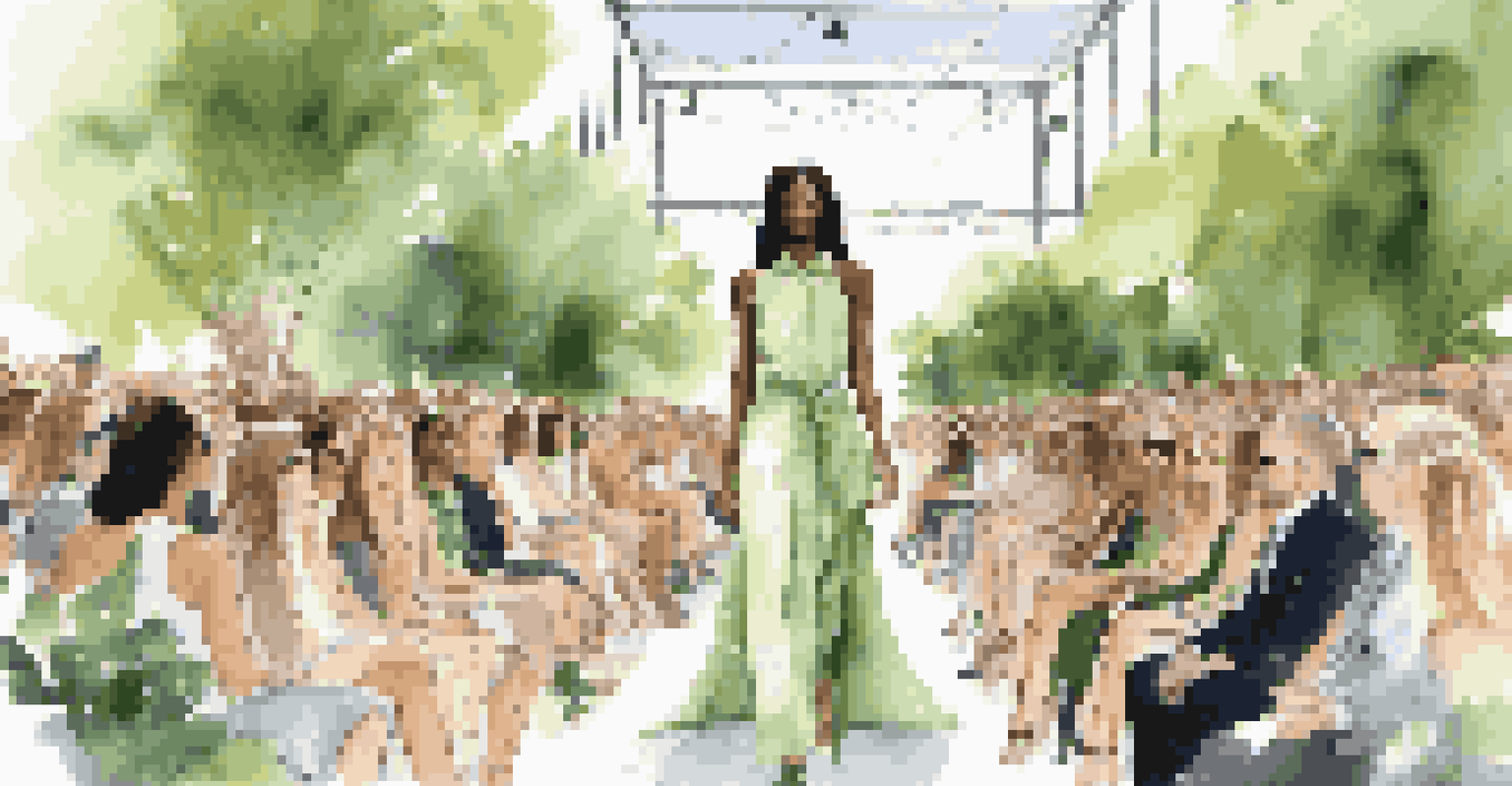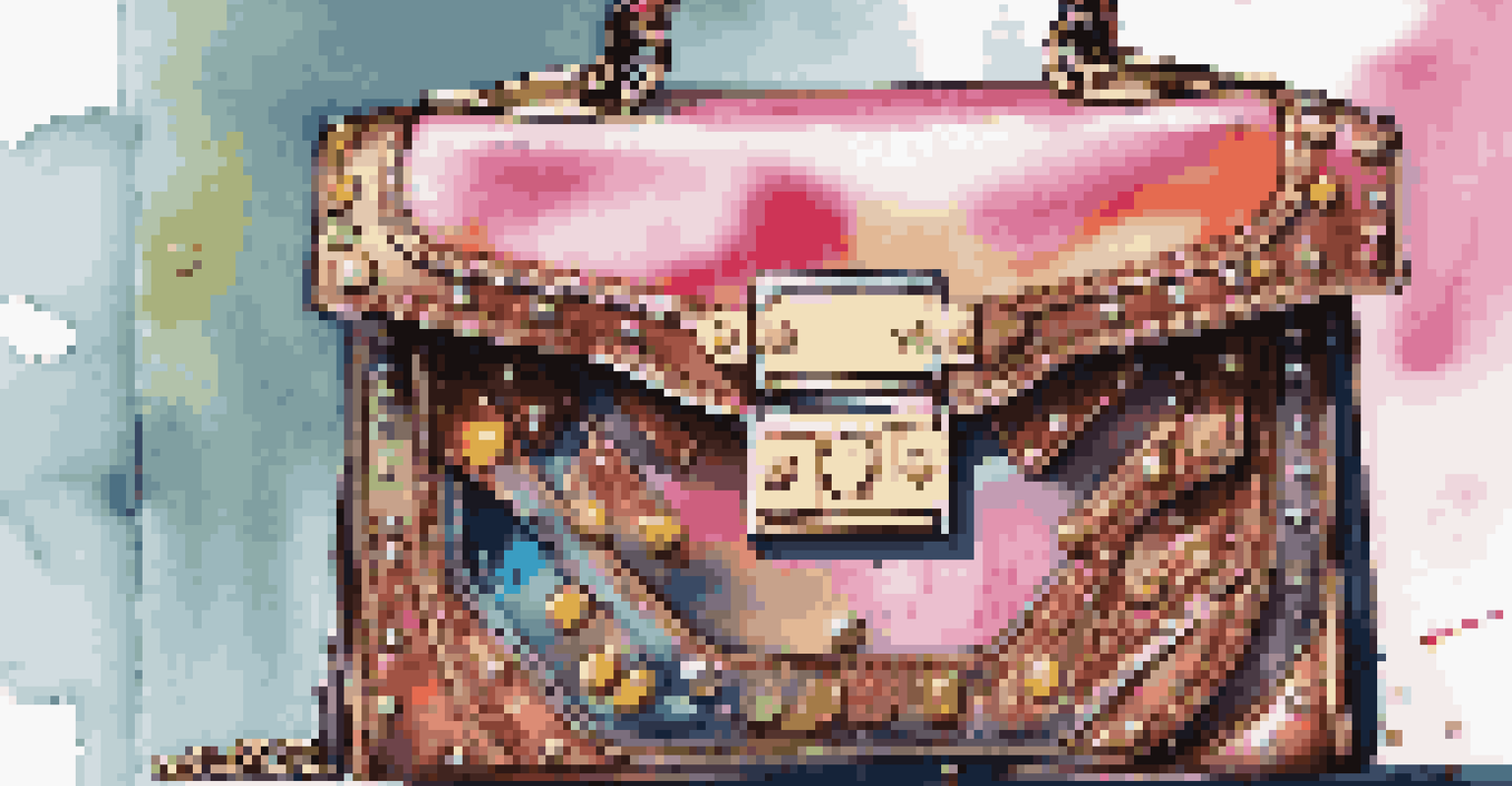The Cultural Significance of Luxury Fashion Collaborations

What Are Luxury Fashion Collaborations?
Luxury fashion collaborations are partnerships between high-end brands and various creators, whether they are artists, celebrities, or even other fashion labels. These collaborations often produce limited-edition collections, blending distinct styles and aesthetics. For instance, when Louis Vuitton teamed up with artist Takashi Murakami, the result was a vibrant collection that redefined luxury with a playful touch.
Fashion is the armor to survive the reality of everyday life.
Such collaborations not only expand the brand's appeal but also introduce new audiences to the luxury market. They create a buzz, sparking interest among consumers who may not typically engage with high-end fashion. By merging different cultural elements, these partnerships enrich the fashion landscape and make luxury more accessible.
Ultimately, luxury fashion collaborations encapsulate the idea of blending creativity with commerce. They showcase how two seemingly different worlds can come together to create something unique, pushing the boundaries of traditional fashion.
The Role of Celebrity Influence
Celebrities play a pivotal role in luxury fashion collaborations, acting as brand ambassadors and trendsetters. When a well-known figure partners with a luxury brand, their influence can significantly drive consumer interest and sales. For example, Rihanna's collaboration with Puma not only revitalized the brand but also made sneaker culture a staple in high fashion.

This celebrity involvement goes beyond just marketing; it often brings a fresh perspective that resonates with fans. The personal style of these influencers can transform a brand's image, as their audiences aspire to emulate their looks. Consequently, luxury brands can tap into new demographics, creating a wider appeal.
Luxury Meets Creativity
Luxury fashion collaborations blend distinct styles and aesthetics, creating unique, limited-edition collections that resonate with diverse audiences.
Moreover, the emotional connection fans have with celebrities can enhance the perceived value of the collaboration. When consumers see their favorite stars endorsing a product, it often feels more desirable, making them more likely to purchase.
Cultural Commentary Through Fashion
Luxury fashion collaborations often serve as a commentary on societal issues and cultural trends. By collaborating with artists or activists, brands can address important topics while simultaneously promoting their products. For instance, the collaboration between Off-White and Nike not only showcased stylish footwear but also engaged with contemporary discussions around streetwear culture.
Art is not a thing, it is a way.
These partnerships can highlight cultural movements, making fashion a platform for dialogue. When brands align themselves with social causes, they position themselves as more than just luxury labels; they become part of a larger conversation. This shift can cultivate a sense of community among consumers who share similar values.
Furthermore, these collaborations can challenge traditional notions of luxury, making it more inclusive. By embracing diverse voices and perspectives, luxury fashion can resonate with a broader audience, reflecting the realities of contemporary society.
The Intersection of Art and Fashion
One of the most exciting aspects of luxury fashion collaborations is their intersection with the art world. When fashion designers team up with visual artists, the result is often a collection that transcends clothing, becoming a form of wearable art. For example, the partnership between Gucci and artist Alessandro Michele brought a new artistic vision to the forefront, merging high fashion with creative expression.
These collaborations allow for a unique dialogue between different art forms, inviting consumers to experience fashion in new ways. It encourages a deeper appreciation for both the craftsmanship involved in fashion design and the creativity of the artist. As a result, consumers often feel more connected to the pieces they purchase, viewing them as part of a broader artistic narrative.
Celebrities Drive Trends
Celebrity involvement in luxury collaborations significantly influences consumer interest and sales, transforming brand images and expanding demographics.
Moreover, the blending of art and fashion can elevate the status of both industries. It challenges the notion of exclusivity in luxury, suggesting that art and fashion can be accessible and appreciated by all.
Globalization and Cultural Exchange
Luxury fashion collaborations often reflect the effects of globalization, showcasing a blend of cultural influences from around the world. As brands collaborate with designers from diverse backgrounds, they create collections that celebrate cultural heritage while appealing to a global audience. For instance, the partnership between Balenciaga and the African-inspired brand, Mowalola, illustrates how cultural exchange can lead to innovative fashion.
This exchange not only enriches the fashion landscape but also fosters understanding and appreciation of different cultures. Consumers are exposed to new ideas and aesthetics, broadening their perspectives on style and identity. It emphasizes the importance of inclusivity in an increasingly interconnected world.
In this way, luxury fashion collaborations become a medium for cultural storytelling. They highlight the beauty of diversity, encouraging consumers to embrace various styles and traditions.
Sustainability in Luxury Collaborations
As sustainability becomes a pressing concern in the fashion industry, luxury collaborations are increasingly focusing on eco-friendly practices. Brands are recognizing the importance of addressing environmental issues, and partnerships often aim to promote sustainable materials and ethical production methods. For example, Stella McCartney's collaboration with Adidas emphasizes the use of recycled materials, setting a new standard for luxury fashion.
These collaborations not only contribute to a more sustainable future but also resonate with environmentally-conscious consumers. By aligning with sustainability, luxury brands can enhance their image and appeal to a growing demographic that values ethical practices. This shift encourages consumers to make more informed choices in their fashion purchases.
Cultural Exchange in Fashion
Globalization fosters cultural exchange in luxury fashion, allowing brands to celebrate diverse heritage while appealing to a wider audience.
Additionally, sustainability in luxury fashion collaborations can drive innovation. As brands work together to find eco-friendly solutions, they often push the boundaries of traditional fashion, leading to groundbreaking designs that prioritize both style and the planet.
The Future of Luxury Fashion Collaborations
Looking ahead, the future of luxury fashion collaborations holds exciting possibilities. As consumer preferences continue to evolve, brands will likely explore new partnerships that push creative boundaries and redefine luxury. This may include collaborations with technology companies, integrating digital experiences into the fashion realm, such as virtual reality or augmented reality fashion shows.
Moreover, the rise of social media will continue to influence these collaborations, allowing brands to reach wider audiences quickly. With platforms like Instagram and TikTok, brands can engage with consumers in real-time, creating buzz around upcoming collaborations. This immediacy fosters a sense of community among fans, who can share their excitement and experiences.

Ultimately, the future of luxury fashion collaborations will likely be shaped by a blend of creativity, technology, and social awareness. As brands adapt to changing consumer values, they will find new ways to connect with audiences while staying true to their luxury roots.